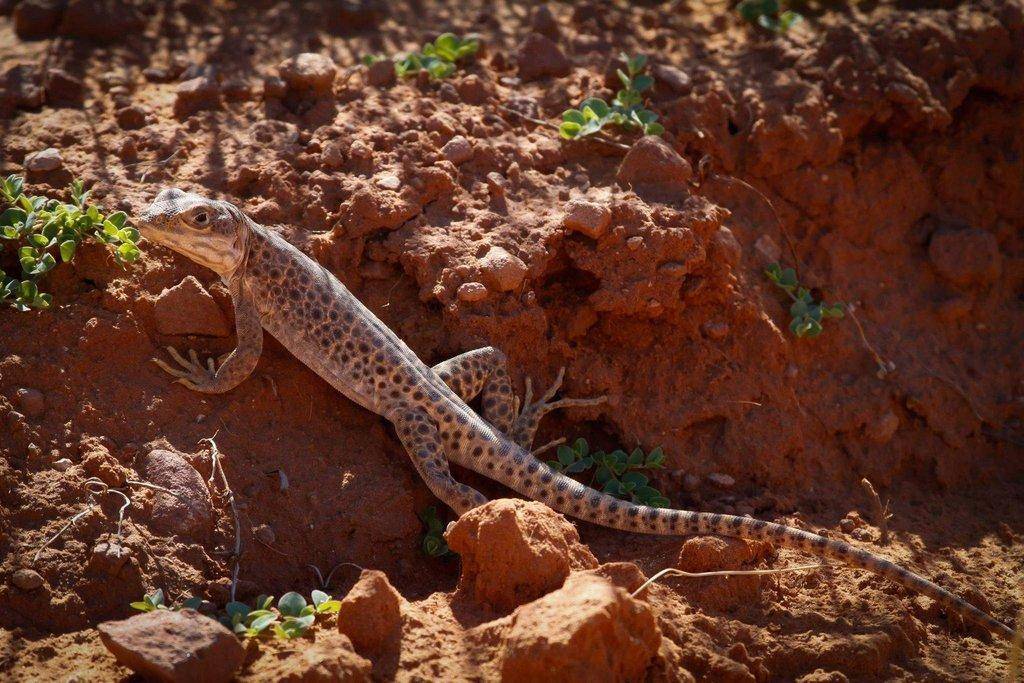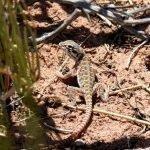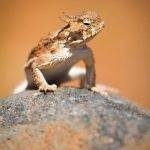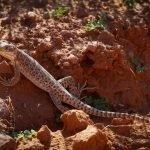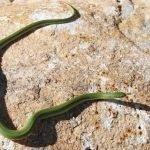DWR News Release
SALT LAKE CITY — The Utah Division of Wildlife Resources is asking for the public’s feedback on a new proposal that would simplify the process allowing people to collect, possess and breed non-venomous native reptiles and amphibians caught in the wild.
Utah is home to 61 native species of reptiles and 15 native species of amphibians. The rule change was proposed to simplify the process for the public to collect these species.
Currently, people interested in collecting, possessing and/or breeding native amphibians and reptiles are required to obtain a Certificate of Registration, which can involve a complicated, lengthy and sometimes expensive process. And most of the highly sought-after native species in Utah are currently categorized as either “controlled” or “prohibited.”
“This proposal was a result of reptile and amphibian enthusiasts wanting easier access, bag limits and a permit to be able to use this natural resource,” DWR native species coordinator Drew Dittmer said. “They wanted to be able to take and engage with these species in a sustainable way and wanted to simplify the process and make it more approachable for the public.”
People interested in taking home a non-venomous reptile or amphibian found in the wild would be required to take an online education course, which would cover the laws, safety considerations and conservation ethics. The education course certificate would be valid for three years. People would also be required to obtain a permit online.
Under this proposal, people would still not be allowed to collect sensitive species, including the Gila monster, Mohave desert tortoise, Arizona toad, Western boreal toad, relict leopard frog and Columbia spotted frog.
Another new change in the proposal would set a bag limit for the number of reptiles and amphibians that could be collected. The bag limit categories vary from species to species and include the following options:
- Limited: 2 yearly bag limit with 4 total in a person’s possession at one time
- Standard: 3 yearly bag limit with 9 total in a person’s possession at one time
- Expanded: 25 yearly limit
While this proposal is similar to laws that other states have in place, the DWR is including a unique rule that would require people who collect reptiles and amphibians to report online where they found the animals. This will help biologists study the activity and distribution of many of the native species.
“There isn’t a good way right now to know how many there are of several of these species,” Dittmer said. “The online community science reporting is exciting and is the biggest thing I’m looking forward to with this new proposal. There are people out there who already monitor reptiles and amphibians in their spare time, so requiring them to report it will give us data that will help us better manage these species.”
If the Wildlife Board approves the proposal, it will go into effect Jan. 1, 2020.
If someone was interested in collecting and possessing venomous reptiles like rattlesnakes, they would still be required to get a Certificate of Registration. There is also an age requirement of 18 years old. However, even with a Certificate of Registration, people would be required to follow their city ordinances to make sure they can legally keep venomous reptiles. Non-native venomous species would still not be allowed in Utah without obtaining a variance from the Utah Wildlife Board.
Map of wild turkey transplant sites for next 5 years
DWR is also proposing new wild turkey transplant sites for the next five years. There are between 25,000-35,000 wild turkeys in Utah, and part of the management plan includes improving hunting opportunities and decreasing human/turkey conflicts, which sometimes necessitates turkeys being trapped and relocated.
The map-based proposal identifies 267 locations where turkeys could be relocated. Of the proposed released sites, 210 would be adding to existing turkey populations and 57 would be new areas for turkeys.
The DWR has trapped and relocated about 10,000 turkeys over the last 10 years. Recording the transplant sites is required by state law, and in the past, they were tracked in a list format. However, DWR felt that a map format would be better because it is more detailed.
“Some of the areas where these birds are transplanted are very big, so using a map allows us to be more specific, rather than using a text list,” DWR upland game wildlife coordinator Dax Mangus said. “These transplanted birds either bolster existing turkey populations or start new populations in an area, and these maps will help us better track them.”
Give feedback
The DWR is asking for the public’s feedback on both of these proposals. You can share your thoughts and feedback at your Regional Advisory Council meeting or by emailing the RAC member over your area. The contact information for the RAC members is available on the DWR website.
The information for the meetings is listed below:
Central Region: May 14 at 6:30 p.m. at the Springville Library at 45 S. Main St., Springville
Northern Region: May 15 at 6 p.m. at the Academy Conference Center at 58 N. Main St., Brigham City
Southern Region: May 21 at 7 p.m. at the Beaver City Center at 30 W. 300 North, Beaver
Southeastern Region: May 22 at 6:30 p.m. at the John Wesley Powell Museum at 1765 E. Main St., Green River
Northeastern Region: May 23 at 6:30 p.m. at the DWR office at 318 N. Vernal Ave., Vernal
Wildlife Board meeting: June 6 at 9 a.m. at the Division of Natural Resources building at 1594 W. North Temple, Salt Lake City
- Photos courtesy of Utah Division of Wildlife Resources

